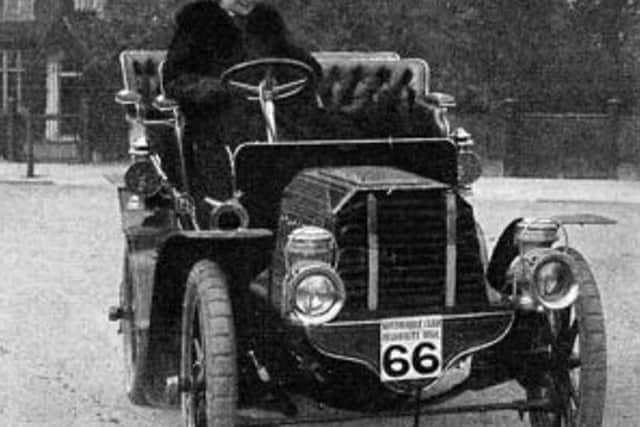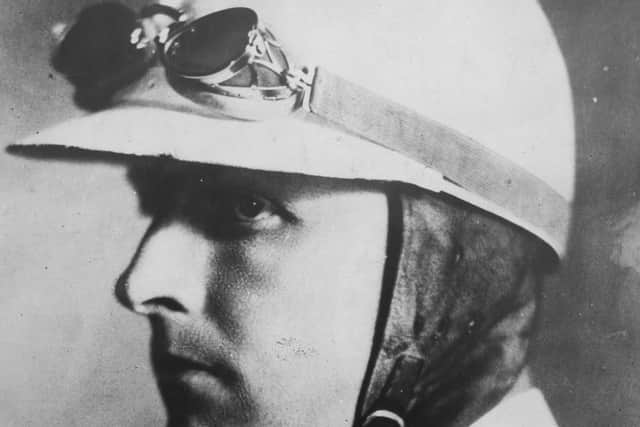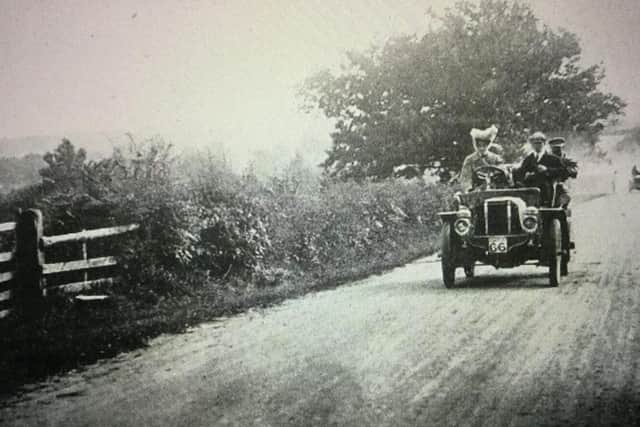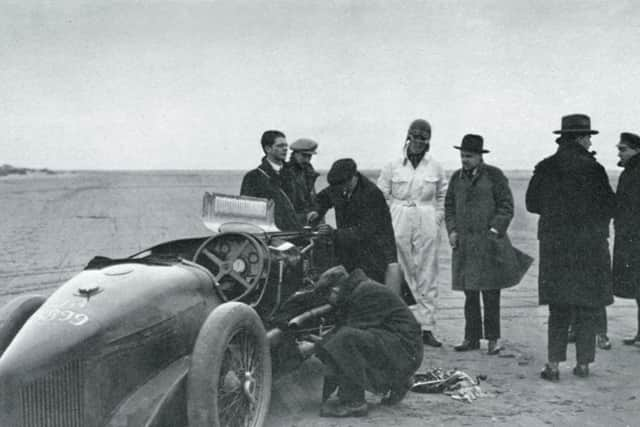Lancashire's kings and queens of speed remembered
and live on Freeview channel 276
This year marks the the 125th anniversary of Sir Henry Segrave’s birth, and the 95th anniversary of his first world land speed record, when he reached 152mph in his Sunbeam Tiger on Ainsdale Beach in 1926.
He is one of the legendary figures from the heroic age of speed; fighter pilot, racing driver, land speed record holder and power boat racer. Two of his land speed record cars, the 1927 1,000hp Sunbeam and the 1929 Irving Napier Special ‘Golden Arrow’ are on display in the National Motor Museum.
Advertisement
Hide AdAdvertisement
Hide AdBy 1926 Major Henry Segrave was already a well-known public figure with a string of international motor racing victories for Sunbeam-Talbot-Darracq to his name.


On January 9 of that year he competed in the Southport Speed trials in a two-litre Sunbeam, walking away with four wins from the four events that he entered. Clearly, the Lancashire sands suited Segrave. Two months later he returned with another Sunbeam for an attempt on the outright land speed record.
Captain Malcolm Campbell had set the record at Pendine Sands with a speed of 150.76mph. For the 1926 record attempt in Southport, Sunbeam had created a new four-litre, V12 powered contender, Ladybird, that, with the addition of a supercharger, was capable of producing 296bhp.
The car’s great advantage was the Roots supercharger but this was also its Achilles heel. Fine sand blowing around the beach got into the blower very easily, but worse still the unit’s aluminium casing constantly distorted and cracked during practice runs.
Advertisement
Hide AdAdvertisement
Hide AdThe chief engineer, Captain JS ‘Jack’ Irving, had to oversee the replacement of five casings during three weeks of preparations and was on the verge of postponing the attempt in order to return to Wolverhampton to design an alternative set-up.


Segrave urged Irving to look again at the supercharger and, rather than have to reorganise the attempt for a later date, “fix it up to last for three minutes” so that they could at least attack the flying kilometre and mile records.
A sceptical Irving agreed to the suggestion and two days later, on March 16, the car was towed to the start line and the radiator was filled with hot water to avoid the need to run the engine for longer than was absolutely necessary.
Segrave’s first run was completed at three-quarter throttle in order to avoid stressing the supercharger. On the return run, he gave the car more throttle, hoping the supercharger casing would remain intact.
Advertisement
Hide AdAdvertisement
Hide AdJust as he passed the kilometre mark the car hit a bump in the sand and became airborne for a few yards, causing the engine, free of load, to over rev and the casing to crack yet again.


All was not lost, they had done enough and the Sunbeam’s average speed over the two runs was 152.33mph, only a little faster than Campbell’s year-old record but sufficient to secure the record for Segrave.
This weekend the resort will be celebrating its pioneers of speed at a special festival including Dorothy Levitt, “The fastest girl on Earth”, who achieved huge acclaim with her sensational performances in the Southport Speed trials in 1903.
Selwyn Edge, director of the Napier Car Company and a famous racing driver, spotted Levitt, a secretary, among his staff. In a bid to promote his cars, Edge decided she should take part in a race, though first he had to teach her to drive.
Advertisement
Hide AdAdvertisement
Hide AdShe surpassed his expectations by winning her class in the 1903 Southport Speed Trials, and proved such a good driver that she was taken on by De Dion for a major publicity stunt. In May 1903, Levitt took part in the Glasgow to London Motor Trial in a Gladiator.


On July 4, 1903 Dorothy Levitt won her class at the Southport Speed Trials driving an SF Edge’s 12 hp. Gladiator, wowing British society as is believed to have been the first woman, a working secretary, to compete in a ‘motor race’. She became noted for racing in a dust coat (a loose coverall coat reaching down to the ankles), matching hat and veil.
Southport, with its ‘seven miles of golden sands’, was the perfect location for motor racing and motorbike racing over the years. Sand racing took place on Southport Beach throughout the 1920s and 1930s and again in the 1960s, 1970s and 1980s.
Twenty four motor car manufacturers were based in and around the town in the early years of the 20th century. They included the iconic Vulcan Factory on Rufford Road, in Crossens, which manufactured motor cars, buses and aeroplanes.
Advertisement
Hide AdAdvertisement
Hide AdThe Vulcan Motor and Engineering Company Limited made cars from 1902 until 1928 and commercial vehicles between 1914 and 1953. Brothers Thomas and Joseph Hampson had built an experimental car in Bolton in 1899. In 1902 they moved to Southport trading as Vulcan Motor Manufacturing and Trading and built the first Vulcan car which was a 4hp single-cylinder.
The company moved from Yellow House Lane to Hawesside Street, both in Southport, before moving to even larger premises at Rufford Road, in Crossens, with a change of company name to Vulcan Motor and Engineering. The historic factory was demolished last year to make way for 157 new homes.
Comment Guidelines
National World encourages reader discussion on our stories. User feedback, insights and back-and-forth exchanges add a rich layer of context to reporting. Please review our Community Guidelines before commenting.